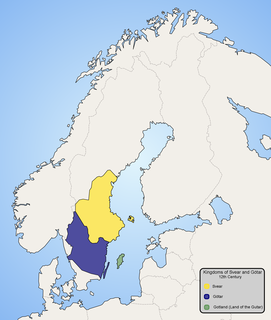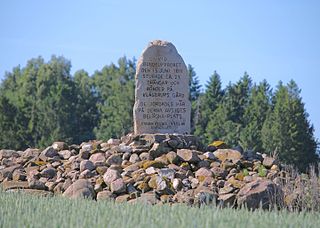 W
WThe 1789 Conspiracy was a plot in Sweden in 1789, with the purpose of deposing Gustav III of Sweden, and place his brother Charles XIII of Sweden on the throne. The plot was instigated by a group of consirators at the royal court, consisting of among others the king's sister-in-law, Charles' spouse Hedvig Elisabeth Charlotte of Holstein-Gottorp, the king's youngest brother Prince Frederick Adolf, Duke of Östergötland, and Charles' favorite Gustaf Adolf Reuterholm. The plot was influenced by the opposition of the nobility against Gustav III because of the Union and Security Act during the Russo-Swedish War (1788–1790), and the plan was to convince Charles to act as the central figure and symbol of this opposition. The plot was discontinued because Charles, when informed, refused to participate in it. The plot was never officially exposed and did not result in any legal action.
 W
WThe Armfelt Conspiracy was a plot in Sweden in 1793. The purpose was to depose the de jure regent Duke Charles and the de facto regent Gustaf Adolf Reuterholm, leaders of the regency government of Gustav IV Adolf of Sweden, and replace them with Gustaf Mauritz Armfelt, the favorite of the king's father Gustav III of Sweden. The plot was instigated by the exiled Armfelt and handled by his agents in Sweden, notably his lover Magdalena Rudenschöld, with support of the Russian Empire under Catherine the Great. The conspiracy was exposed in 1793.
 W
WThe Dacke War was a peasant uprising led by Nils Dacke in Småland, Sweden, in 1542 against the rule of Gustav Vasa. Dacke and his followers were dissatisfied with the heavy tax burden, the introduction of Lutheranism, and the confiscation of Church property. In 1543 the uprising was defeated, and Nils Dacke was killed.
 W
WThe Dalecarlian rebellions were a series of Swedish rebellions which took place in Dalarna in Sweden: the First Dalecarlian Rebellion in 1524-1525, the Second Dalecarlian Rebellion in 1527–1528, and the Third Dalecarlian Rebellion in 1531–1533. The rebellions were conducted by the peasantry of Dalarna against the Swedish monarch, King Gustav Vasa. Mutual reasons for all three rebellions were loss of support of Gustav I among the Dalecarlian peasantry because of the economic crisis, the increased royal power, and the unpopular Swedish Reformation.
 W
WThe Engelbrekt rebellion (Engelbrektsupproret) was an uprising during 1434–1436 led by Swedish miner and nobleman Engelbrekt Engelbrektsson and directed against Eric of Pomerania, the king of the Kalmar Union. The uprising, with its center in Dalarna and Bergslagen, spread throughout Svealand and Götaland. The rebellion caused erosion within the unity of the Kalmar Union, leading to the temporary expulsion of Danish forces from Sweden.
 W
WIn modern Swedish, Folkung has two meanings, which appear to be opposites:The medieval "House of Bjelbo" in Sweden, which produced several Swedish statesmen and kings. A group of people, who were at times in political opposition to the same House of Bjelbo. This "political party" fought for the ancient right of free men to elect the kings in Sweden.
 W
WThe Battle of Haraker was fought on 17 April 1464 at the village of Haraker, Västmanland, approximately 20 kilometers north of the city of Västerås in Sweden. The Swedish separatist army, under the command of the Bishop of Linköping, Kettil Karlsson, defeated King Christian I's Danish army.
 W
WThe Klågerup riots is the name for a series of Swedish rebellions which took place in Scania in Sweden in the summer of 1811.
 W
WThe March Unrest was a brief series of riots which occurred in the Swedish capital Stockholm during the Revolutions of 1848.
 W
WThe Westrogothian rebellion, also known as Västgötabullret or Västgötaherrarnas uppror was a Swedish rebellion which took place in the provinces of Småland and Westregothia in Sweden during the spring of 1529. The rebellion was led by members of the nobility, and the purpose was to depose the Swedish monarch King Gustavus Vasa in an attempt to stop the recently initiated Swedish Reformation.